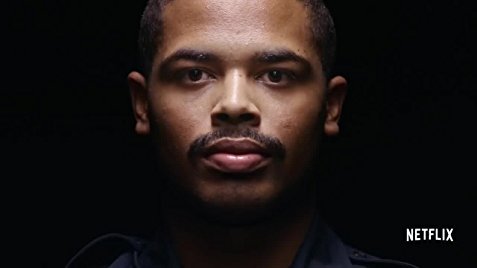In a time where communities fear law enforcement and the media determine the public opinion, Flint, Michigan remains at the center of these issues. In Netflix new series, “Flint Town,” the docuseries highlights the conflicts of the most dangerous city in America and the resilience the community holds.
The eight-part series not only manages to expose the hardships the city has endured, but also tells the stories of several police officers within the force who recognize the wounds of the community.
The Water Crisis
It was only four years ago that Flint, Michigan first made headlines after government officials declared a state of emergency after their water source was contaminated with lead. Years later and after a handful of deaths, Flint’s community remains splintered by the hands of these officials.
After the crisis erupted in 2014, the series reveals the people of Flint in a downward spiral, with no trust in the government. Ultimately, citizens began to live up to their infamous nickname, Murdertown, USA, with a significant rise in crime and rebellion.
News headlines may have once demanded a resolution for the city, but after seeing little to no change after all these years, the series allows viewers to feel the same anger citizens face within their community.

As if the citizen’s hardships weren’t enough, the series also shows a clip of Flint’s mayor pushing the button to switch the city’s water source following with the disturbing images of the tinted water that poisoned children without prior knowledge.
“Flint Town” showcases individuals who have been affected by the crisis as well as the citizen’s heavy reliability on bottled water for simple, everyday tasks such as brushing their teeth and showering. Although the water crisis is not the main focus of the series, it contributes to the public distrust of government officials and the long journey to rebuild relationships.
Unemployment
Previously known as “Motor City,” the home of General Motors provided thousands of good paying jobs for citizens of Flint. Before GM moved overseas, Flint was a place to thrive without having to worry about the safety of their own children.
However, now that the motor company has fled from Michigan, it has left Flint in a state of shock, leaving many unemployed and the community broken. Those once employed now face poverty after many of their homes foreclosed. Horrifyingly, this action has pushed some of these citizens towards illegal activities in an effort to keep themselves off of the streets.
“Flint Town” shows an officer at one point pulling over to tell a homeless man to stop loitering on the bench just to get rid of his bed for the night. After clearing out the bench and any slight shelter the homeless man may have had, the officer turns to the camera and mentions how his actions will allow a child to walk down the street for “maybe two weeks.”
The chain reaction GM’s departure caused for Flint’s unemployment and poverty is beyond the control of police officers. However, the growing list of conflict and crime all add to the obstacles police must face in order to keep “Flint Town” safe.

Crime and Flint Police Department Understaffing
Flint has consistently been on America’s Most Dangerous Cities with little fluctuation within the top ten. The series focuses heavily on the police department and the pressures officers face daily in an effort to decrease crime within the nicknamed Murdertown, USA.
Faced with racial tensions due to the media’s high profile of police brutality and the communities ongoing mistrust in the government to keep them safe without clean water, Flint’s police officer’s daily responsibilities begin to seem near impossible.
As the series conveys, the department is severely understaffed with a total of 98 police officers after budgeting issues forced the department to lay off nearly 200 deputies. With such a decrease in staff, a handful of officers are responsible for the safety of the entire city.
Desperate for a solution, the department begins training volunteer officers to heal the wounds and attempt to decrease crime on the streets. While hundreds of calls pour in daily, it leaves the citizens of Flint questioning if calling 911 is worth the frequent deadly wait.
Its reality continues to prevail when the series shows some of the most extreme cases these officers have to tend to. Throughout the eight-part series, a lifeless 16-year-old lays in the snow while her mother screams for help, a domestic case leaves a man with 16 stitches and drivers are frequently pulled over and arrested for driving under the influence.
Perhaps the most eye-opening part of the series is in the sit-down interview with officer Brian Willingham. The officer, who wrote an editorial for the New York Times, gives a firsthand perspective of the obstacles the police department have become accustomed to.
“How can citizens in Flint trust the police to protect them when they can’t even trust their government to provide them with clean water? … Police officers are seen as outsiders in urban America. White officers are seen as racist, while black officers like me are seen as traitors to our race.”
As unfortunate as it is in 2018, race was a significant contributor to the list of issues the Flint series addressed. Even though the series only lasted eight episodes, the racial strain upon the community does not end there. Instead, it forces viewers to take a step back and evaluate the tensions that society as a whole faces today.
“Flint Town” is so raw, it’s impossible to not binge. From the first episode, it was surreal to see how this once-rich city lives in fear, in contrast to my own community. Flint is confronted with one of its most crucial times. With the series, it brings light to the controversial issues the city has learned to live with.

















